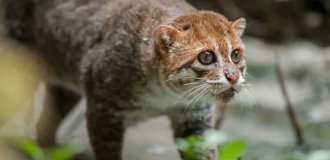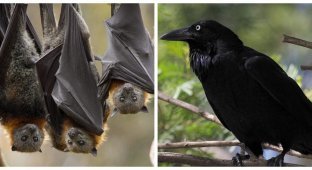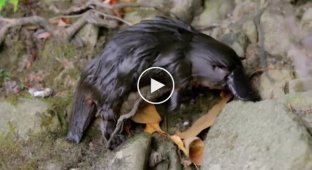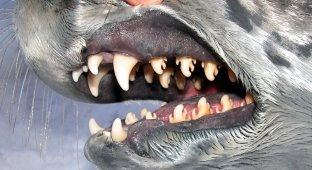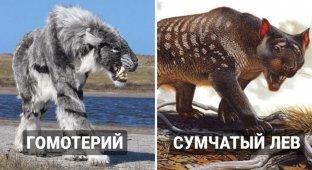Platypus: every fact here is a miracle of nature (14 photos)
Do you know what is the most amazing thing about platypuses? No, not a muzzle with a beak. Not a beaver tail. And not even the ability to lay eggs. And the fact that they are still alive at all. 
According to molecular and genetic studies, the developmental branches of the familiar placental and slightly less familiar marsupial mammals diverged from the platypus ancestors about 187 million years ago. So you understand, in those days there was just a heyday of all sorts of saurs on the planet, and South America and Australia were a single continent. And since then these animals have hardly changed! 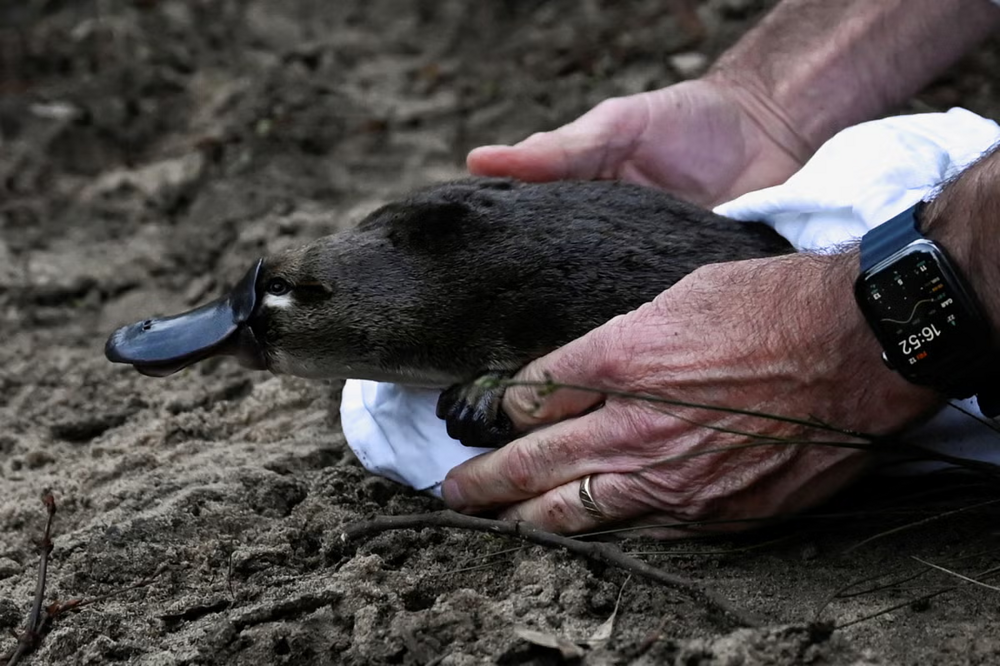
Dudes, T-Rex owes me hundreds. Nobody saw him?
The platypus moved from the lands of South America about 167-110 million years ago. The conditions in Australia turned out to be so comfortable that animals stopped evolving in the new lands! Platypuses have retained a bunch of primitive jokes that other mammals abandoned a long time ago. Moreover, animals have survived with them for millions of years! What are these features? Now we'll tell you. 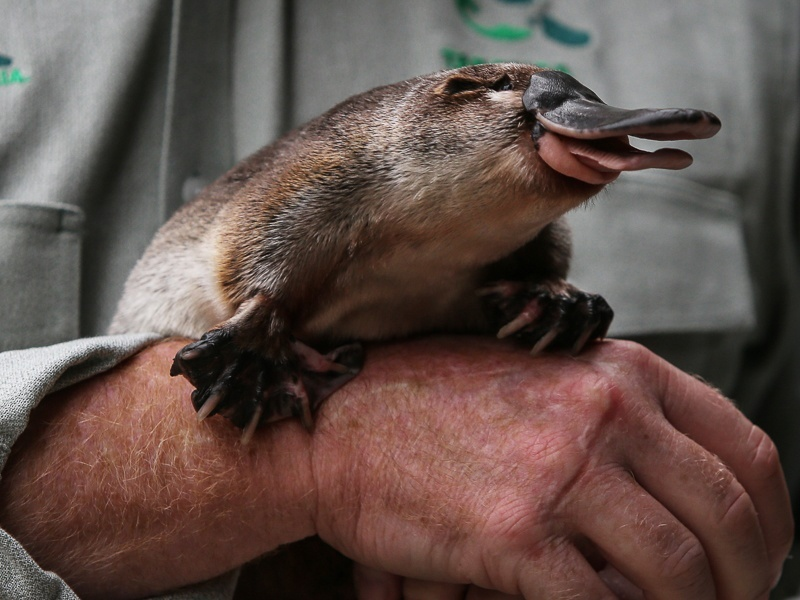
So, I don’t understand, are you calling me primitive? Explain, I really didn't understand...
Let's start with the most noticeable: appearance. Although in photographs platypuses look at least the size of a beaver, in reality they are quite small animals. An adult and well-fed nose weighs up to 2.4 kilograms, and its length is no more than half a meter. 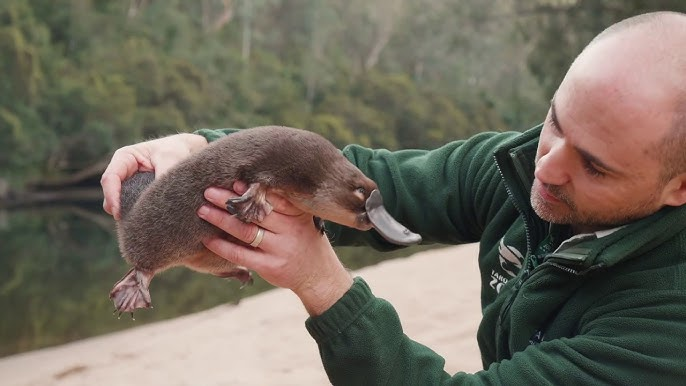
Yes, platypuses are even smaller than seals!
If you are lucky enough to stroke the animal, you will feel soft fur, like that of a mole or rabbit. And if you shine ultraviolet rays on a platypus, you will see that it glows! No, this is not a metaphor, the animal’s fur literally shines with blue-green light under UV. Why is this necessary? Scientists don't know yet. But biologists realized that platypuses see ultraviolet radiation. Although the eyes are far from their main sense organ. What then? Nose! 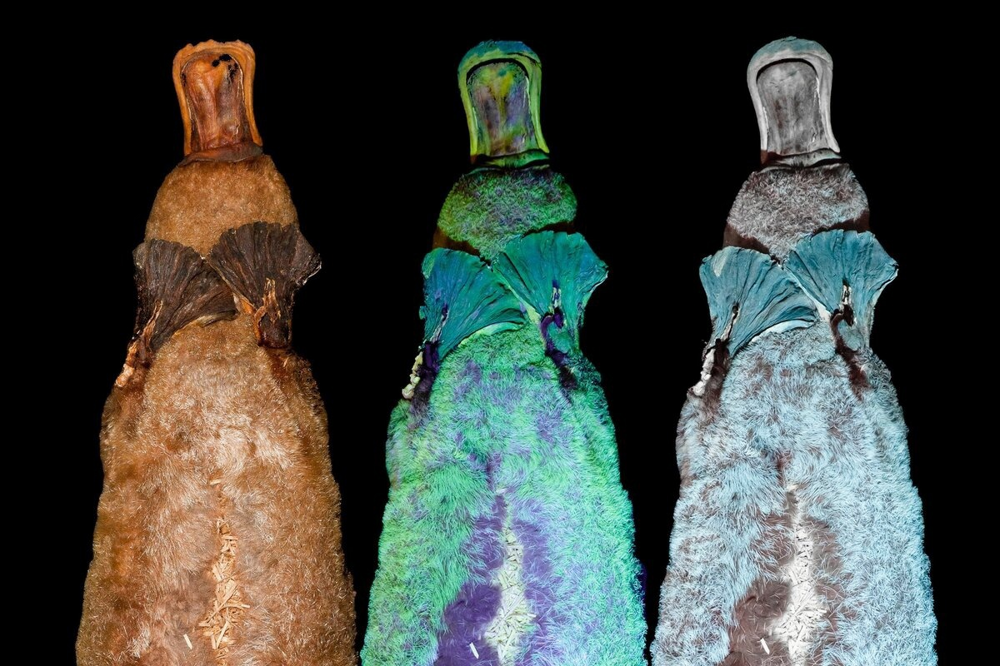
The photo shows a platypus under normal light (left), under ultraviolet light (center), under ultraviolet light with a yellow filter (right).
If you rub the platypus's nose, you will be convinced that it has nothing in common with the bird's beak. The nose is covered with soft and elastic skin, similar to rubber. And hidden inside it are electrical and mechanoreceptors. In general, fish and sharks use this way of perceiving the world. And among modern mammals, electroreception is known only in Guiana dolphins. The point is that the platypus senses the electric fields of other living beings with its nose. Theoretically, they are perceived as touch. 
While you finish your porridge with butter, the platypus breakfasts on giant shrimp. Let's envy him together.
Electroreception helps platypuses find food in turbid water. Raising silt from the bottom, the animal quickly collects worms, mollusks and larvae. True, the animal cannot immediately eat the caught goodness - an evolutionary bug; platypuses do not know how to chew underwater. Therefore, they put their prey in cheek pouches and then chew it thoroughly on land. 
- Platypus, what are you thinking about? — About how cool it would be if I weren’t distracted from chewing.
The platypus spends at least 12 hours on the above procedure. Despite their modest size, the animals are very gluttonous - in order not to die of hunger, they eat up to 20% of their own weight per day. Catching half a kilo of worms every day is not an easy task. In order to find the strength to swim for half a day, platypuses can speed up their metabolism three times (!). True, the metabolism of platypuses itself is very slow - the average body temperature is no higher than 32 ° C. This is another joke from ancient times, when mammals were partially cold-blooded. That is, their body temperature could change depending on the ambient temperature.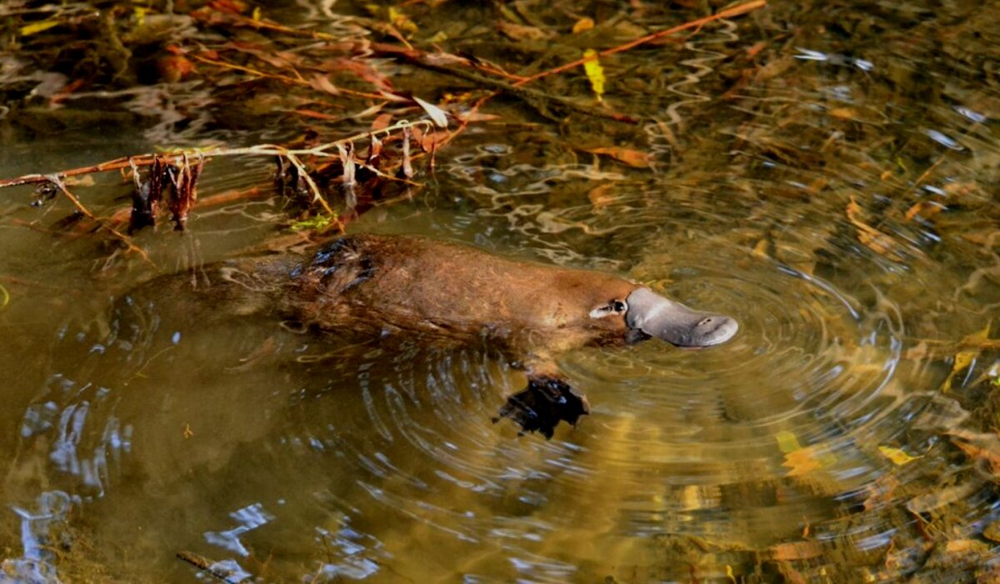
The life of a platypus looks like a vacation. The first part of the day you swim, the rest of the time you sleep and eat. Perfect!
Swimming takes a lot of energy from your noses. To make sure no one disturbs them while resting, the animals dig giant holes - up to 10 meters deep! The membranes on the paws bend during digging, and strong claws stick out. A very effective solution!
Well, the reproduction of these animals generally deserves a separate article. From June to October, males are actively looking for a mate. The heartthrob does not stop at one single passion: he occupies as large a territory as possible, covering the possessions of several females. Males fight desperately for the right to the best area with platypuses. You don't look at the cute face, toothless beak and chubby cheeks. Showdowns occur with prehistoric cruelty: each male is armed with a pair of poisonous shivs. 
If you look closely, there are serious claws there.
On the outside of the hind legs, adult platypuses have heel spurs through which venom is released. Toxic mammals can be counted on one hand. And there are even fewer of those animals that secrete poison on their own, and do not process it from the food they receive. The poison consists of defensin-like proteins. In other mammals, these substances are responsible for fighting bacteria, viruses and inflammation, but in our heroes they also work like poison! 
Only males have such a spur to fight for the female.
For humans, platypus toxin is not fatal, but it is quite harmful. The injection site is swollen and very painful. What's especially tricky is that victims can develop hyperalgesia—excessive sensitivity to pain. Sometimes it is so strong that even narcotic analgesics do not help! But we’re lucky: the platypus’ venom generally kills small mammals, like dogs. 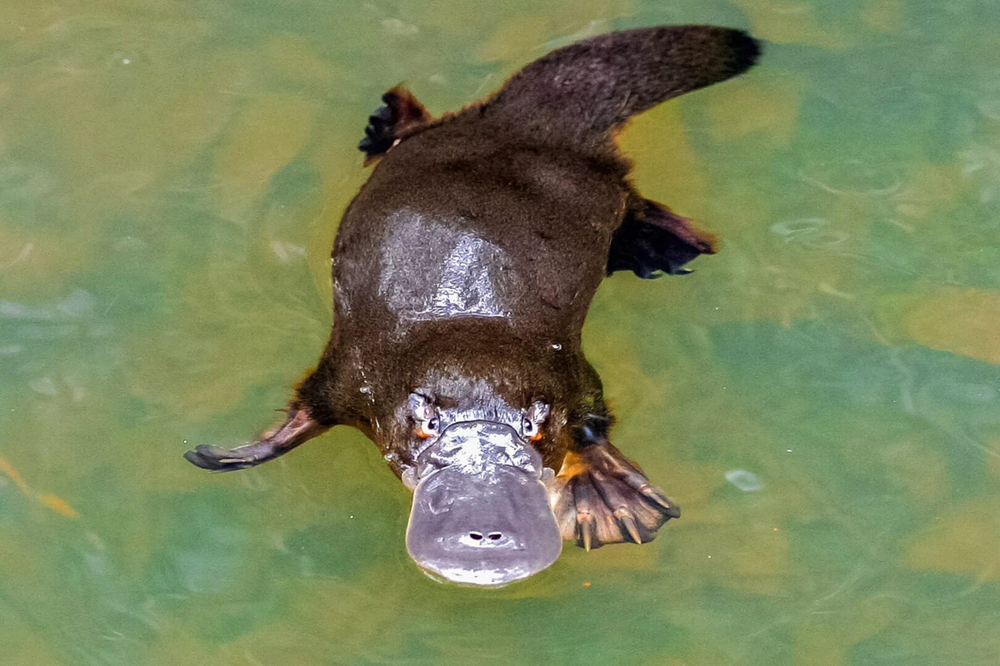
Well, are you ready to experience unbearable pain?
After mating fights on poisonous spurs, the winner mates with the female and goes for bread. His spouse will not get any help from him. During the month of pregnancy, she will have time to dig a hole herself and build a nest from all sorts of things. Having laid a couple of leathery eggs, the platypus will incubate them for the next 10 days, curled up in a ball. 
Platypuse milk is similar to the normal milk of other mammals. This makes it even more interesting that it flows not from the mammary glands, but from the pores of the body! That is, it stands out like regular sweat on the belly!
I don’t think it’s worth explaining that eggs are a primitive thing. But why did platypuses retain this method of reproduction at all? Scientists explained this by the fact that 3 vitellogenin genes are responsible for egg production in the body. In birds and reptiles they are completely preserved. In mammals, they have disappeared. And platypuses retained 1 of 3 genes. Therefore, their clutches are neither bird nor reptile-like. Also, due to the absence of 2 genes, platypus eggs do not have formed whites and yolks. And this is understandable: after all, the hatched babies will begin to drink milk! 
Platypuses appear very tiny, and the eggs of the animals are two times smaller than those of quails.
Platypuses are born naked, helpless and with teeth! True, teeth will fall out with age. The baby will spend the next 4 months in the hole, licking mother's milk from special grooves on her belly. Platypuses do not have the usual mammary glands; instead, the animals literally sweat milk from all the pores on their belly. The noses will crawl out of the hole only after a couple of months. And the little thing reaches sexual maturity in the first year of life. 
Vupsen and Pupsen.
Animals have been found in the wild at the ripe old age of 10 years. In captivity, platypuses celebrate their seventeenth birthday. In addition to environmental conditions, the life of platypuses is shortened by snakes and monitor lizards, which sometimes appear in rivers. Fortunately, humans are not yet in first place on the list of threats to ancient mammals: the platypus, although a rare animal, is not yet going to die out from our influence. On the contrary, in Australia there are many specialized programs for rescuing and breeding platypuses.






